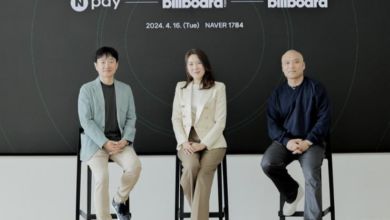Is fintech the key to better debt collections?

Phone calls and letters are still going strong in
So is the use of artificial intelligence and machine learning to target consumers in a more palatable way.
Several fintechs that operate as digital-first or technology-enabled debt collections agencies, including
The anonymity can also be a blessing.
“There are a lot of misconceptions about people who are in debt, particularly outside of
The question of how to effectively collect on debt is especially relevant as consumer debt levels tick up. A 2024 report from Datos Insights that surveyed more than 200 third-party debt collection professionals found that letters and telephones are by far the most prevalent communication channels they use to contact consumers, at 98% and 93% of respondents respectively. But 69% deploy email and 40% send text messages. Nearly a third of respondents are considering adding text as a method in the next two years. Banks have also been
“For many years, debt collection was very archaic,” said Joann Needleman, who leads the consumer financial services regulatory and compliance group at law firm Clark Hill. But the Consumer Financial Protection Bureau’s Regulation F, which it
There is also data to suggest consumers would welcome this shift. A Datos Insights survey of 2,005 respondents in 2023 found that 77% of consumers who pay bills handled by debt collection companies are at least somewhat interested in a “contact us” option via text if they have a question regarding their bill, while 38% are “very” interested.
“When Regulation F came out, there was a lot of concern from consumer advocates that consumers will be bombarded with emails and texts,” said Needleman, who led the response from the National Creditors Bar Association to the Consumer Financial Protection Bureau’s advanced notice of proposed rulemaking for Regulation F in 2013. “That has not happened. The industry is finally meeting consumers where they are and using technology to do that.”
Incorporating AI and ML into debt recovery
Firms such as TrueAccord, January and InDebted typically receive data files from their clients, who may include banks, credit unions, credit card issuers, fintech lenders,
TrueAccord is largely recognized as paving the way for other digital-first collections agencies when it started in 2013.
“They did a lot of favors with getting the industry comfortable with digital self-service collections,” said Tyler Gillies, vice president of operations and business development at January.
TrueAccord’s engine, called HeartBeat, uses machine learning to determine the right channel, time and message content for each consumer. It contains a compliance checking filter to ensure outreach is in compliance with the Fair Debt Collection Practices Act, Regulation F, and state or local laws.
“To the extent you make a contact at 10 a.m. or 1 p.m. or 4:35 p.m., that makes a big difference in terms of engagement and response,” said Steve Carlson, president of TrueML, the parent company of TrueAccord. “We’ll work to optimize it.”
TrueAccord paid $500,000 earlier this year to the state of Colorado as part of a settlement with the attorney general’s office after investigators found that between 2017 and 2022, TrueAccord collected or attempted to collect on about 29,000 consumers who defaulted on loans issued by tribal lending entities. These loans often carried interest rates north of 500% annual percentage rate, which consumers are not obligated to pay under Colorado’s rate cap of 12% for unlicensed loans. TrueAccord told consumers they owed the full loan balance.
In response, TrueAccord said it recently entered into an assurance of discontinuance with the state of Colorado regarding lenders affiliated with federally-recognized Native American tribes following a standard 2019 collection agency audit.
“TrueAccord denies that any of our practices violated the Colorado statutes,” the company said in a statement. “As a result of the agreement, Colorado is compensating consumers who made payments on those accounts. None of the terms agreed to will impact TrueAccord’s delivery of collection services to our clients and consumers.”
January, whose name is meant to evoke a fresh start or a resolution, maps its clients’ borrowers into four quadrants depending on their ability, or inability, and willingness, or unwillingness, to pay. “The most important quadrant we are after is willingness and ability to pay,” said Gillies. “If we can truly optimize for those who are willing and able to pay and approach them with compassion, we have already started on a better foot.”
The language in texts and emails tries to communicate that “we want to find an arrangement that is comfortable for you and we are truly here to help,” said Gillies.
InDebted, which is based in Australia, expanded to the U.S. in 2021. It operates similarly to the others, with proprietary machine learning models that use historic and real-time engagement data. Each piece of communication includes a link to its self-service portal, Resolve, where users can manage their accounts.
“Digital engagement gives off a lot of signals,” said Josh Foreman, founder and CEO of InDebted. “Have you opened your email? Are you on our website? What offers are you looking at? Are you looking to settle the account by paying in full or set up an arrangement?” For instance, if a consumer is logging in far away from where they live, it could be a clue that travel is the reason they have not repaid their debt.
Equabli is a self-described end-to-end collection and recovery hub for clients, which include financial institutions, fintech lenders and debt buyers. “We don’t interact” with customers, said Cody Owens, the CEO of Equabli who co-founded the firm in 2020. “We’re the technology and analytics provider.” But it too demonstrates how machine learning is entering the debt collections space.
Equabli will use its APIs to ingest delinquent customer and account information and documentation from its clients that they will need to collect on debt and manage the collections process. Equabli’s system uses machine learning and predictive analytics to categorize customers by propensity or ability to repay, and will automatically monitor for compliance with debt collection regulations, such as flagging whether a third-party agency exceeded the maximum allowance of seven calls in seven days. The system also lets its clients engage with customers through digital means, such as personalized texts and emails, and provide them with options for self-service.
While only 11% of the debt collection professionals that Datos surveyed are using third-party solutions that incorporate AI and machine learning, 40% are either in the process of deploying such solutions or considering it. The top three uses for those who have or are deploying it are to predict payment outcomes, to segment and profile customers for various workflows, and to augment the self-service platform.
Making sure the message goes through
These companies need to establish upfront they are legitimate and not sending spam.
“This is something we work against,” said Carlson. “Most people kind of know, I did take out a loan from so-and-so. It’s more, do I actually want to work with these people? Or do I want to run from them because I know I’m going to get harassed?”
The firms will typically initiate communication via email. Regulation F requires that the initial written communication contains the balance due, the creditor to whom the debt is owed, the name and address of the consumer, and clear instructions to the consumer for how to dispute the debt.
Foreman said that when emails are opened, unopened or marked as spam, this information all feeds back into InDebted’s model to indicate whether or not this is a good channel for a particular consumer.
“When we send a text or make a phone call, we will be sure to send content that reflects that we understand they marked that email as spam, we can understand why that might be the case, but this one is not, and here is some further information about their account, to help validate the authenticity,” he said.
Gillies notes that all of January’s communications include information about its relationship with the owner of the account and the debt in question. The company has also invested in its consumer-facing brand to ensure January’s online image is credible and up-to-date.
“The moment a consumer opts out of receiving text communications, that lead is as good as dead,” said Moore. “With a text message you only have one shot to say who you are.”



